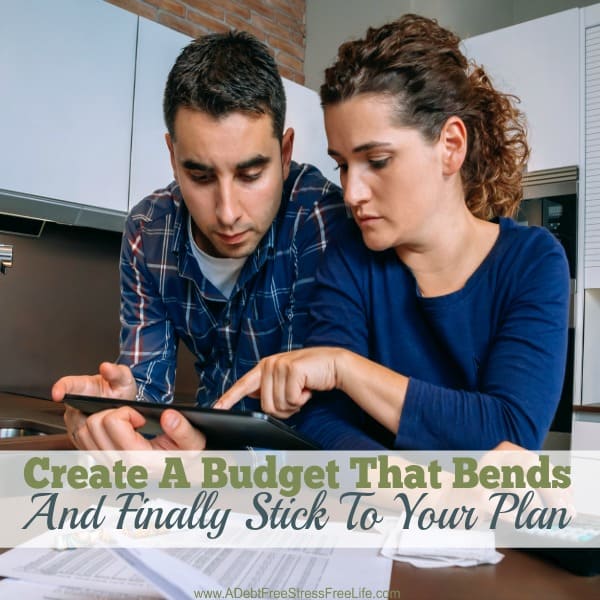A Mess Free Life may collect a share of sales or other compensation from the links on this page.
Budget. The word is so restrictive. Kind of like the word diet.
Both immediately give a sense of deprivation and a feeling you’ll never be able to engage in anything fun.
Any finance expert will tell you, having a family budget is key to your fiscal well-being.
The key is to create a workable spending plan, with built-in flexibility.
Table of Contents
Create A Budget That Bends And Finally Stick To Your Plan
The first step in creating a budget that bends, is to be realistic about your expenses and the need for an emergency fund.
For a spending plan to be most successful, you need to create an emergency fund that will cover those out of the blue, when you least expect it events that happen in everybody’s life.
Whether it be a trip to the vet, the water heater blows, or the car needs servicing, things happen, and having a well-funded emergency fund will prevent you from blowing your budget or worse, using credit cards to handle the crisis.
Start with the Expected and the Status Quo
Most of us have typical, relatively stable and predictable spending habits. The mortgage gets paid; we need so much to put food on the table, and we know if we don’t pay the light bill, we’ll be sitting in the dark.
Take what you know and create your spending plan, by mapping out a year of your family’s typical monthly expenses. You can do this with pen and paper, your computer spreadsheet, or with apps like Mint or YouNeedABudget.
Next, include occasional bills for things like school supplies, holiday gifts, birthday’s, anniversaries, camps, extracurricular activities for the kids, your photography lessons – whatever are the things that come up in your family but are not due each month.
After all, that is documented, add a cushion to your budget for the inevitable.
Next, divide the total by 12 and this becomes your monthly spending plan. The amount in each category represents your average monthly expenses. Use this number as a guide in your spending.
If you have a well-established emergency fund already, the “cushion” funds will be added to your account to replenish what you’ve used in the fund. If you don’t have a fund, you’ll be putting this money into a separate account to be used when life happens.
Related: Saving Smart
When To Implement Flexibility
The car breaks go, or after a severe storm a fallen tree is lying in your front yard. Either of these issues can result in a big bill that needs to be paid.
Your spending plan is the place to look for the funds to cover the cost of these unexpected expenses, particularly if you don’t have an emergency fund available to you.
In some categories, like mortgage or rent, the number is the number. There’s no wiggle room. But in other categories, you can make a conscious choice to scale back.
Before I had an emergency fund, if things got tight I would scale back on groceries. Instead of stocking up in that month, I’d take that money to pay for something unexpected. I’d also forego any entertainment budget I might have created that month.
In my spending plan, I often would budget for a particular item I needed for the house. On those months when I needed the money to cover an unexpected expense I would put off buying that item and put the money towards what needed to be paid now.
The beauty of your plan is the flexibility it affords you in paying what needs to be paid now while ensuring you don’t use credit cards to fund your sudden expense.
Related: Using Credit Cards
Jackpot!
If you have a yard sale and make a few hundred dollars or sell something on eBay and score big, take a break from watching every penny and enjoy yourself – just a little.
If you’re too restrictive with your spending plan, not allowing yourself to have any fun, you’re more than likely going to fall off the wagon and spend recklessly.
Here’s a good rule of thumb: put a third of it towards debt, a part into savings, and a third to do something fun.
If you don’t have an emergency fund, put that money into savings first. Next put it towards having, at least, six months of living expenses saved in case of a loss of job or illness. Finally, if those two bases are covered, put the money towards your retirement.
Your budget doesn’t have to be so rigid it snaps like a twig under the least amount of pressure.
Instead, you want it to be move with you, paying for expenses that need to be paid while ensuring your saving and not accruing more debt.
A spending plan does just that.


